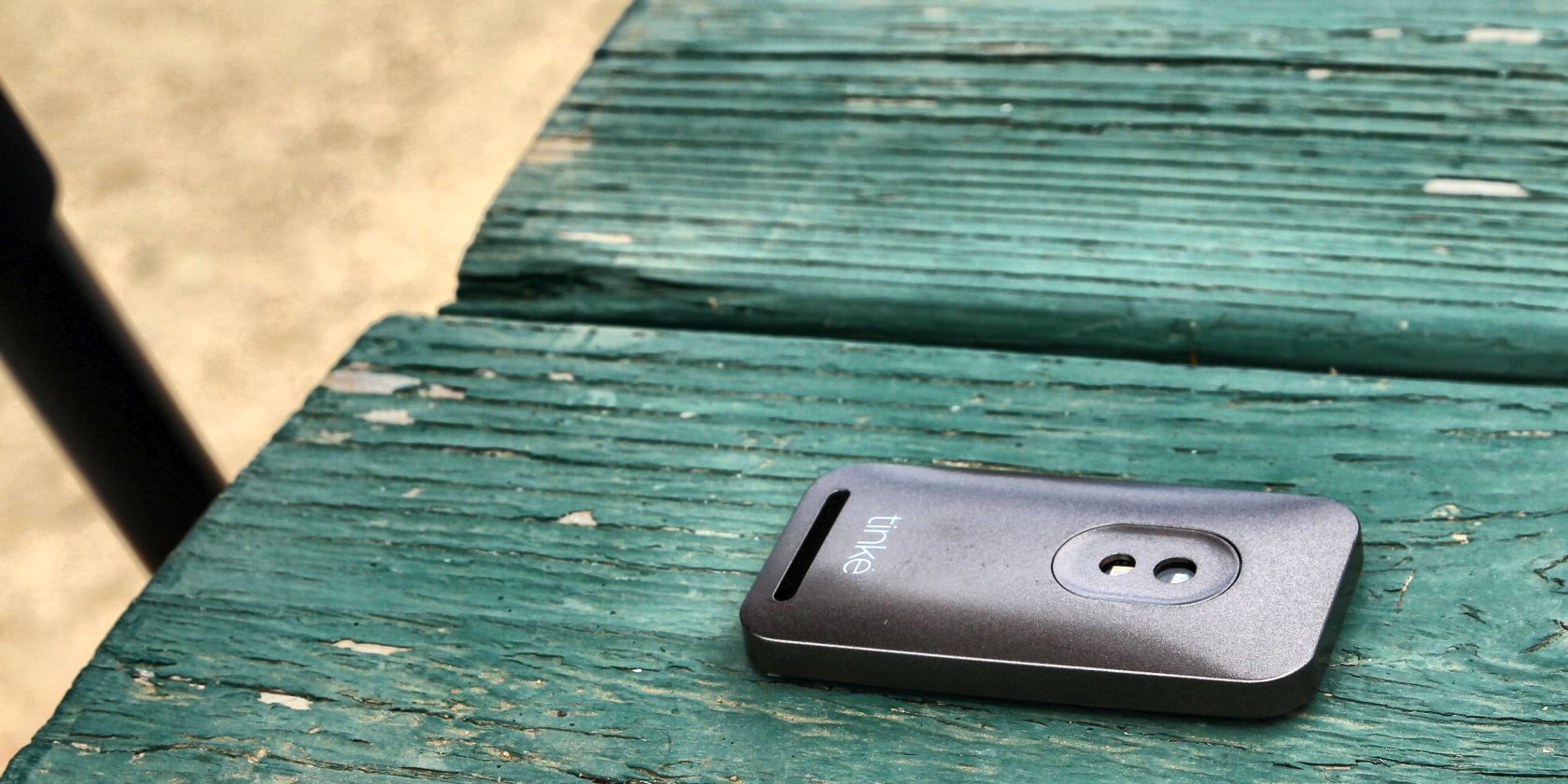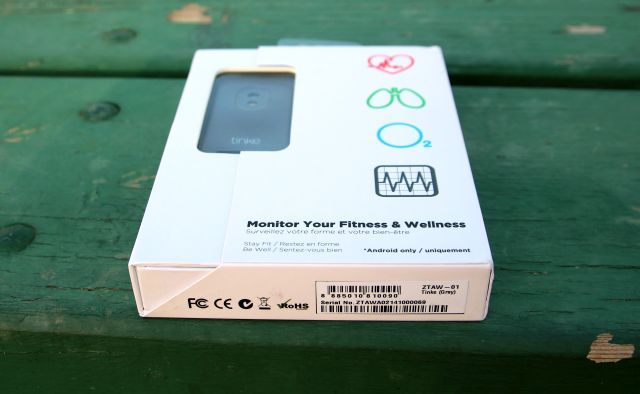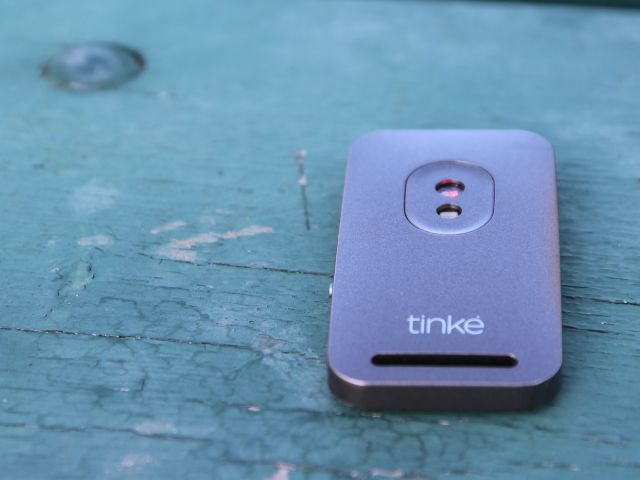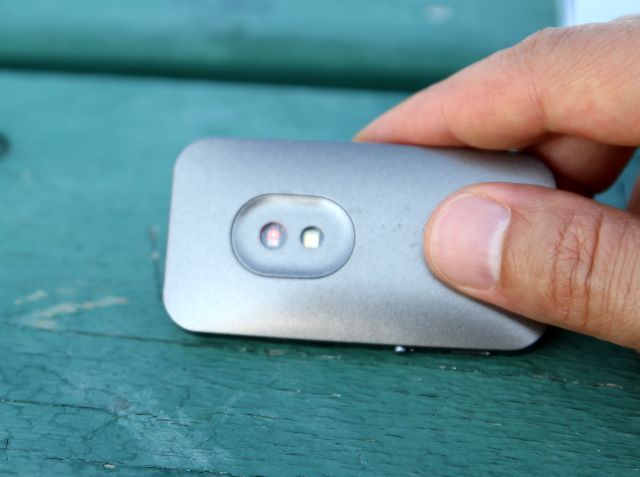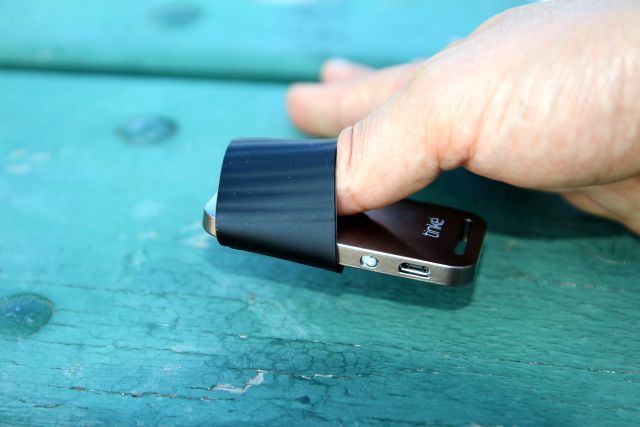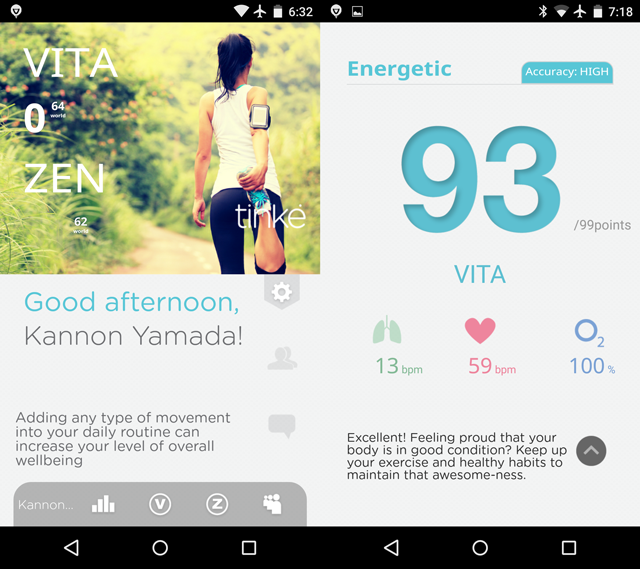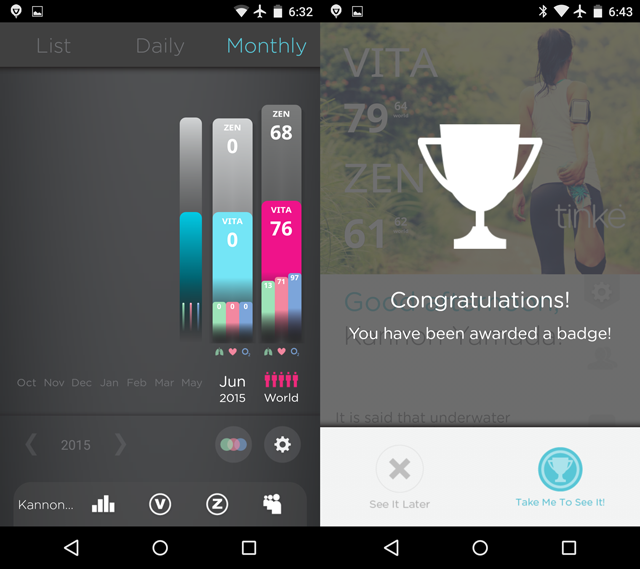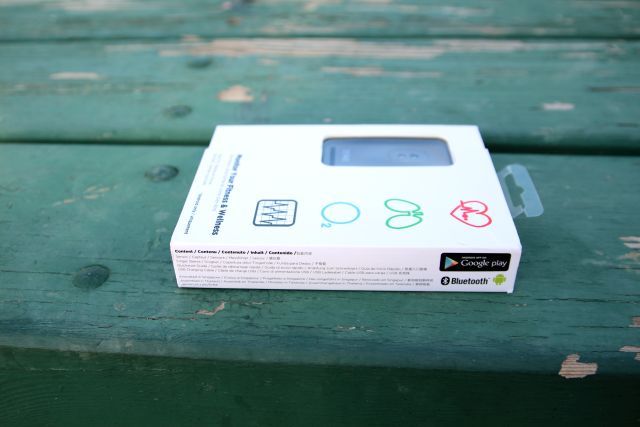Zensorium Tinké Health Tracker
Beginner or intermediate meditators and yoga practitioners might want to check this one out. There's very few meditation aid wearables on today's market. For $120, it's relatively inexpensive in a unique niche.
Zensorium's Tinké is a "wearable" health tracker and meditation aid which costs around $120, compatible with both Android and iOS devices – but does it beat out other biofeedback measurement devices, like the $200 Muse Headband?
At the of this review we've got one Tinké for Android to give away, and for a limited time you can also get 10% off the price off any Tinké, with coupon code makeuseof [No Longer Available].
Like similar wearable products, the Tinké isn't a standalone product. It requires pairing with a smart device, like a phone or tablet. It's also worth noting that Zensorium created two versions of the Tinké. The iOS designed version looks shorter, squatter, and more box-like. The device we tested is for Android only and it's clad in steel, with a brushed metal texturing. Functionally, both devices appear identical.
Only those who meditate on a frequent basis would get any value out of it – although everyone should learn how to meditate on a daily basis. Meditation possesses very real impact on human health..
The Tinké carves out its own niche in the crowded wearables market as a meditation aid and wellness benchmark. But does its solid construction, excellent software, and simplicity of use warrant a purchase? Read on to find out.
Aesthetics and Hardware Design
The Tinké comes in a bizarre shape – for a wearable. It's little more than a rectangular steel-alloy box with a three biometric sensor suite. It clips onto the thumb using a magnetic silicone-rubber mat. The user simply presses their thumb over the sensor cluster, wrapping the magnetic rubber mat around their thumb. The Tinké's locking mechanism, although inelegant, gets the job done.
However, I don't understand why Zensorium went with a rectangular design, rather than a more ergonomic shape. While a simple box better accommodates a lithium-ion battery and printed circuit board, it is not the first shape that comes to mind for a wearable device.
Specifications for Android Tinké
- Two sensor package, including blood oxygenation, and heart-rate
- Sensors: One red LED 940nm and one infrared LED 660nm
- Length: 37mm Width: 7mm Height: 70mm
- Unknown rechargeable Lithium-ion battery, with one charge lasting 120 spot checks (approx 30 days of use)
- Magnetic locking mechanism
- Steel alloy body construction
The body of the Zensorium comes in a steel, or steel alloy, shell. The two halves of the shell have been press fitted together, leading to the appearance of a seam along the edges of the device. There are no latches on the Tinké, suggesting it cannot be disassembled or user-serviced. If the battery dies, then the entire device would become useless. Those who attempt self-service risk damaging the device. The steel shell appears to be so thin at points that an indicator light can shine through the metal.
The Tinké remains the most unusual wearable I've yet had the pleasure to review. Instead of using the ubiquitous green LED light, the Tinké comes equipped with a red LED and an infra-red emitter. There's actually a very real physical reason for this choice – it's by no means a stylistic option. Most sensors consist of an emitter and a receiver. The emitter shoots light at (and into) the skin. Some of this light reflects off the skin and back, hitting the sensor on the device. Different colors (or wavelengths of light) possess different physical properties. Blue light possesses the most energy but is also absorbed at the skin level, so it can read less deep into the human body than the ubiquitous green. Red and infra-red light have the smallest wavelengths, making them ideal for reading more deeply into human skin.
I cannot think of any wearable which employs red LED lights as its primary sensor mechanism – this may extend from difficulties with light pollution, which contaminates pulse readings and has virtually destroyed the accuracy of most wearable heart-rate sensors. Because Tinké chose to design a meditation aid – one not suitable for users in motion – they beat a path around the hazards of light pollution and inaccurate sensors, since meditators remain motionless. Overall, red LEDs might just result in better biometric readings.
I would guess that the Zensorium's software runs on some very minimal, embedded variant of the Linux operating system. For the curious, you can check out the other kinds of operating systems in wearables.
Tinké in Use
The Tinké doesn't take a lot of effort in order to configure and use – just make sure it's charged and powered on before beginning. First, install the Tinké app on your device – either iOS or Android – and then initiate the pairing process. Last, place your finger over the red LED sensor, wrap the silicone rubber pad around your finger, and fire up the app. It then takes around five minutes to complete and includes heart-rate and other information.
Of special note is Tinké's Android application, which offers extraordinary design and ease of use. The application remains one of the best I've seen in this category, offering the kinds of polish and slick design seen in mainstream product offerings.
Tinké splits its biometric readings into two categories: "Vita" and "Zen". As the names suggest, Vita refers to the user's vital statistics. I believe that loosely translates into heart-rate and blood oxygen content, although the app also appears to derive the number of breaths a user takes per minute, based on data gathered from the three sensor cluster.
Zen mode on the Tinké app measures the user's general levels of calm. I couldn't find an explanation of how Zen mode works, but it more than likely examines the user's blood oxygenation, breathing, and heart-rate. In mindfulness meditation, practitioners ideally slow their breathing and heart-rate – it's not required by the meditation, but in general, mindfulness should reduce stress, which relates to heart-rate and breathing.
Accuracy of the Zensorium Tinké
The Tinké produces three biometric readings: breaths-per-minute, heart-rate, and blood oxygen. Blood oxygen is referred to as specific oxygen, or SpO2. Unfortunately, I could only test the accuracy of the heart-rate sensor and breaths-per-minute.
Breaths-Per-Minute (BPM): To test BPM, I simply held my breath during while the Tinké read my biometric data. No matter how I tried, the app continued showing my BPM as 13 or 14 – which is the same for when I wasn't holding my breath. This suggests that the device estimates BPM and really doesn't actively measure it.
Heart-rate: To test heart-rate, I simply manually read my own heart-beat while the Tinké read my vitals. On the two spot checks that I performed, the sensor fell within a couple beats of my manually read heart-rate. Its heart-rate sensor is very accurate—at least, more accurate than any other pulse trackers I've used, including the Basis, ZenWatch, and Gear Fit.
SpO2: Although we can't judge the accuracy of this reading, we should be able to determine whether the blood oxygen sensor works at all. I exhaled, then held my breath throughout a test, which in theory should show abnormally low blood oxygenation combined with a jackrabbit-like heart-rate. In fact, Tinké's app managed to figure out that I was toying with the sensors. It reported both a lower SpO2 level, combined with a heart-rate over 100 beats-per-minute.
The Tinké by no means replaces similar medical devices. The somewhat primitive tests that I ran suggest its breaths-per-minute metric is estimated and not direct. Even so, its other sensors appear accurate. At least as accurate as a medically approved heart-rate sensor. As a meditation aid, the Tinké offers pretty much everything users would want, at a price that's cheaper than the competition.
The Tinké offers an all-round good aid for beginning or intermediate meditators. Unfortunately, it might not be suitable for those who have meditated for years. Devices like the Tinké offer a good tool for those wanting to take their technique to the next level, but in truth, there's no magical bullet. Although I used the device for several weeks straight, I was unable to dramatically lower my heart-rate. At best, my numbers improved around 5%. I can't blame Zensorium for my own failings, but it seems that becoming a better meditator takes a lot of hard work. Don't purchase a Zensorium expecting to morph into a meditation master within days. Those interesting in only heart-rate tracking while moving, looks into the Basis B1 or the Basis Peak.
[recommend]Beginner or intermediate meditators and yoga practitioners might want to check this one out. There's very few meditation aid wearables on today's market. For $120, it's relatively inexpensive in a unique niche.[/recommend]
Send your products to be reviewed. Contact James Bruce for further details.

